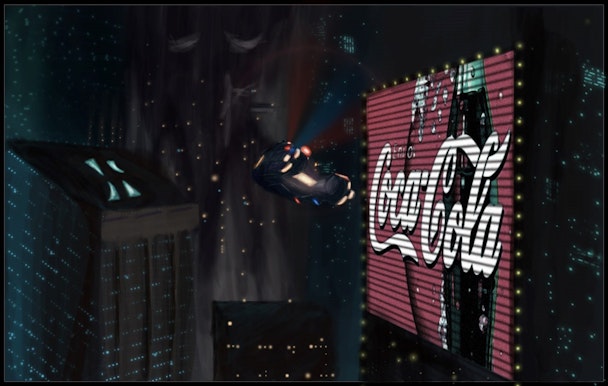We need to fix the broken model of geolocation data
After its release in 1982, it took 35 years for a Blade Runner sequel to hit screens. The original flopped on release, only to be adopted as a cult movie, and it looks like that might have to happen again.

Four weeks after it was released, the US box office for Blade Runner 2049 has topped at $82m, just over half of its $150m budget. In Hollywood terms the film is officially a flop and it also bombed in China.
What may also be considered a failure is one of the motifs of the original film; namely the notion and culture that personalised advertising can be pushed to people in the location they find themselves.
While the promise of verified and geolocation data hasn’t been with us as long as the 35 years it took for a Blade Runner follow-up, it certainly feels as if it has.
Nothing, apparently, has changed. A survey last month by Carto and Hanover Research found that 42% of businesses still rely on traditional BI tools to analyse location data.
The report emphasised that location data can be analysed to completely transform the way marketers understand and target their customers.
Unfortunately, many marketers are under-utilising their location data and are not bringing in the right geographic and socio-economic context or tools to reach its full potential.
It found that 39% of C-level executives say their business performs spatial analysis on their location data, only 27% of businesses said they use any kind of custom geography and 17% use block groups.
Moreover, nearly half of respondents (49%) said ‘ensuring data quality and accuracy’ is a top challenge.
This is astonishing data to read in 2017, let alone five years ago and who’s to say it won’t be the same in 2049? The location replicants seem to have taken over this particular asylum.
It’s not as if innovation and creativity are absent in this sector. Last month, The Drum reported that American Airlines London’s black cabs have partnered on a real-time geofencing campaign to deliver mobile ads to passengers’ phones in American Airlines-branded cabs.
The campaign was conceived by MediaCom and will incorporate OOH advertising on digital panels and online advertising.
While not as immersive as a shop front talking to a passerby or a whole animated building calling out with a personal interface, this is still a clever promotion and one that will interest, not pique, passengers.
Anything to be away from those black cab screens in the back that promote non-personalised products that seem only to play in barber shops or on fast trains to Gatwick and Heathrow airports.
MediaCom certainly seems to be one agency that is working on improving the geolocation experience for brands as well as consumers. One of its suppliers, also part of the American Airlines campaign, is London-based geolocation company Mobsta.
Its managing director, Denise Breslin has strong opinions about this apparent (and unregulated) Wild West scenario and why the Carto and Hanover Research survey is so depressing.
“This is a serious industry that is a growing part of advertisers’ budgets and growing at 40% per annum. Depending on who you believe, this market will be worth something between £15bn and £45bn in 2020," says Breslin.
"A survey that says that half of the respondents cannot ‘ensure data quality and accuracy’ means everybody in our industry needs to buck their ideas up."
Increasingly, the geolocation industry is looking to AI to bring expectations into line with delivery.
Mobsta itself has an AI product, Optio, that is a deep learning-based technology platform that creates simulations of the real world. It works, not on genetic probability data masquerading as AI, but on multi-layered Artificial Neural Networks.
The company runs campaigns based on its audience’s behaviour rather than just profiling demographic. It also identifies trends affecting people's location behaviour; Optio is currently being used by brands such as Red Bull and American Express.
AI is often cited as the saviour of underperforming industries that ‘suffer’ from being difficult to implement and hampered by human fallibility and error, but with geolocation, it may be the answer to the industry’s current ills.
With some forecasters saying that 60% of location data is erroneous, there will come a time when advertisers will say enough is enough and demand more exacting KPIs.
Until then, deals such as those between American Airlines and London’s black cabs may have to do.
Either way, it doesn’t look as if Blade Runner is coming to us soon… wherever our location happens to be.
Monty Munford has over 15 years experience working in the mobile and digital sectors. He writes on tech and culture for The Economist, Forbes, The Telegraph, MIT Tech Review and many others. He tweets @montymunford
